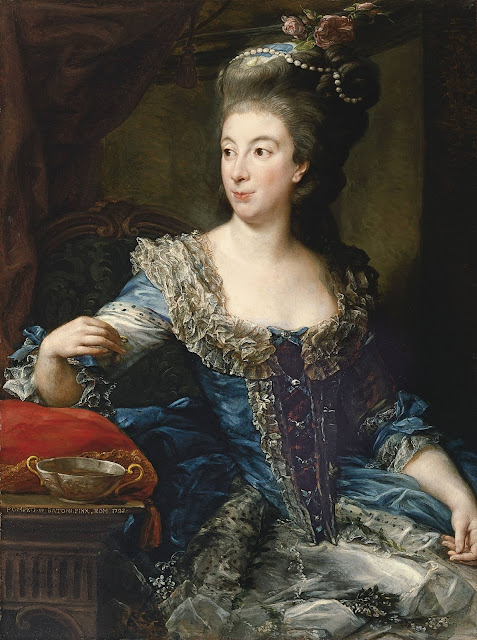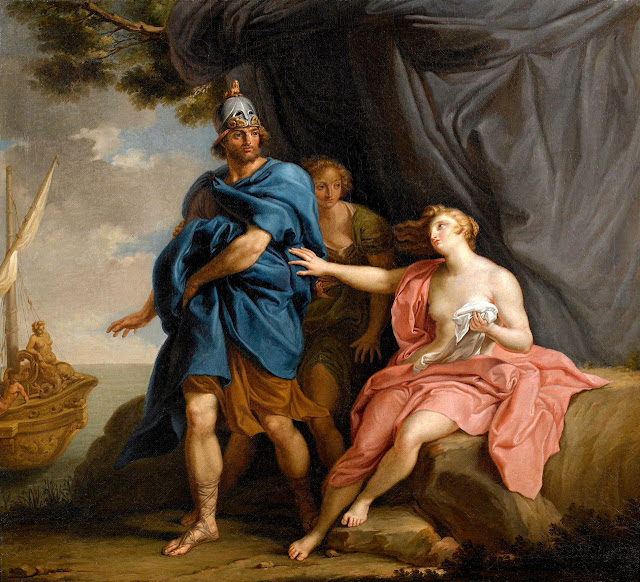 |
| Pompeo Batoni Thetis entrusts young Achilles to Chiron the Centaur 1770 Hermitage, Saint Petersburg |
In the vast corpus of paintings by Pompeo Batoni (1708-1787) there are many portraits of identifiable men but relatively few portraits of individual women. The explanation for this fact goes back to social conventions of the 18th century when legions of wealthy young men were encouraged to travel on the Continent, encounter the great world, and have adventures – while their sisters were expected to remain uneventfully at home, preserving their reputations for innocence. Hence, far fewer young women of the portrait-subject classes ever reached Rome, and Batoni was seldom presented with the opportunity to paint them. The artist's female figures must be sought elsewhere. They flourish on other sorts of canvases – mythological, allegorical, and religious, as below.
 |
| Pompeo Batoni Time compels Old Age to destroy Beauty ca. 1746 National Gallery, London |
 |
| Pompeo Batoni Head of a frightened girl 18th century Morgan Library, New York |
 |
| Pompeo Batoni Portrait of Contessa Maria Benedetta di San Martino 1785 Museo Thyssen-Bornemisza, Madrid |
| Pompeo Batoni Madonna annunciata ca. 1741-42 Louvre |
 |
| Pompeo Batoni Venus and Cupid 18th century private collection |
| Pompeo Batoni Marriage of Cupid and Psyche 1756 Gemäldegalerie, Berlin |
 |
| Pompeo Batoni Portrait of the Marchioness of Headfort and her daughter 1782 Museum of Fine Arts, Houston |
| Pompeo Batoni Allegory of Art 1740 Stadtische Galerie, Frankfurt |
 |
| Pompeo Batoni Susanna and the Elders 1751 private collection |
 |
| Pompeo Batoni Portrait of a woman 1785 Yale Center for British Art |
 |
| Pompeo Batoni The Continence of Scipio ca. 1771-72 Hermitage, Saint Petersburg |
 |
| Pompeo Batoni Dido and Aeneas 1747 location unknown |
 |
| Pompeo Batoni Allegory of Peace and War 1776 Art Institute of Chicago |